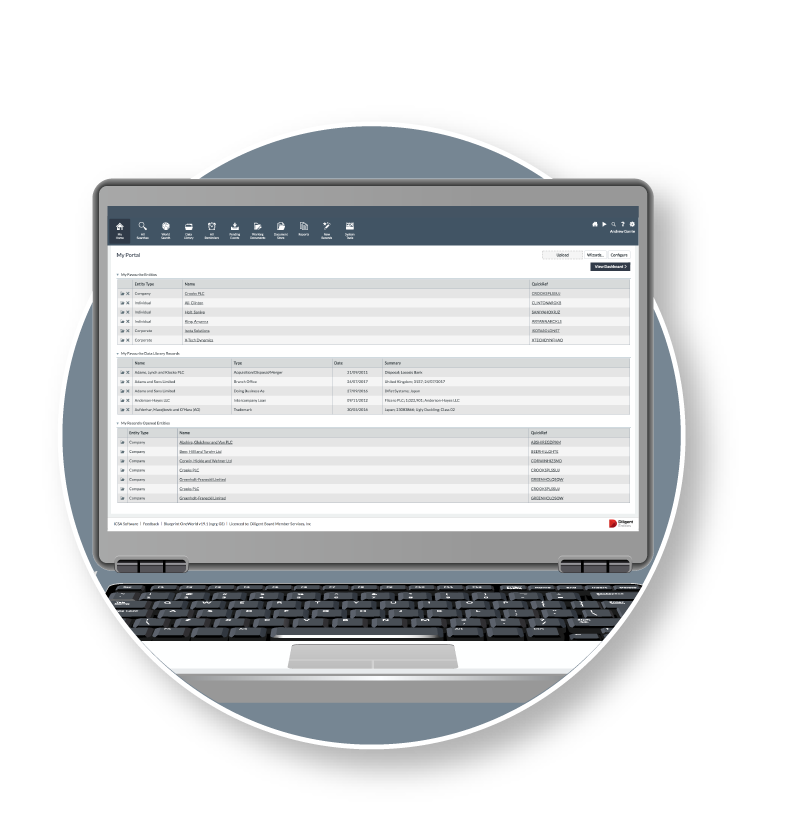Governance and compliance are never the purview of a single person or a single team. There are vast numbers of people, from legal operations up to the C-suite, who must have access to parts of the corporate record.
Yet the sharing of critically sensitive information is a significant liability and compliance risk for most companies, and oversight in the area has generally been lax. When sharing sensitive corporate documents internally and externally, email, local files and even collaboration tools used by the rest of the organization can be inadequate to provide the control and security necessary for good governance and compliance. Exchanging documents through insecure means like email ' especially personal email ' can lead to key man risk and potential leakage.
Still, organizations must get the right information to the right people at the right time for the best outcomes. How can they do so in a way that is secure, and at an acceptable risk level for the CIO and the CSO?
Those in charge of both the platforms and the information must consider how to deal with issues such as:
But really, anyone within the compliance and governance chain must ensure that their own slice of the pie is as robust as possible. That means every director, every board member, every legal operations professional, every risk manager ' everyone has their part to play, and must protect their own patch and contribute to governance security risk management.
That 'protecting the patch' idea, though, can bring its own governance security risks. If you're just thinking about your patch, and not the next guy's patch or the one before you, how do you ensure that the same standards are being applied? Just because you take security seriously doesn't mean everyone acts the same way. And what of the grey area where the processes join? How do you ensure your corporate information processes are securely integrated?
If your governance process involves multiple platforms, you need those platforms to be able to speak together, to seamlessly share data and to ensure that the entity information in platform A can be accessed by the board portal in platform B, which can then be shared with, or automatically file documents with, regulators from platform C once director information has been updated in platform D. Without an integration, that governance process can become unwieldy, patchy ' and risky.
There are, however, options available ' technology and portals that seamlessly integrate and share information to help ensure that end-to-end governance process while also securely protecting your corporate information. And it's that last bit that is of utmost importance. While you could potentially build a bridge through add-ons and APIs, each 'join' in the technology presents a potential weakness for cybersecurity threats to exploit.
Diligent enables better modern governance by providing a structured end-to-end process to efficiently govern with confidence. As specialists in both entity and board management, in compliance and governance, Diligent's product suite is truly integrated. Built by the same hands, with security in mind at all times.
Diligent's integrated governance suite includes its entity management software and board management software, as well as secure file-sharing and secure meeting workflow, a way to share information with internal and external stakeholders with more control ' including time-bound access links and the ability to stop downloads or copying. It's a complete end-to-end governance solution that ensures your sensitive corporate data can be moved between systems securely and with appropriate controls to make sure the right person has the information they need at the right time.
Get in touch and schedule a demo to see how Diligent's end-to-end modern governance solution can improve the security of sensitive corporate information, reduce the risk of data leakage and decrease the overall cost of managing corporate information.
Yet the sharing of critically sensitive information is a significant liability and compliance risk for most companies, and oversight in the area has generally been lax. When sharing sensitive corporate documents internally and externally, email, local files and even collaboration tools used by the rest of the organization can be inadequate to provide the control and security necessary for good governance and compliance. Exchanging documents through insecure means like email ' especially personal email ' can lead to key man risk and potential leakage.
Still, organizations must get the right information to the right people at the right time for the best outcomes. How can they do so in a way that is secure, and at an acceptable risk level for the CIO and the CSO?
The Security Risks Inherent in Modern Governance
Modern governance doesn't just face the potential for human error in sharing corporate information across the business. With so many technology platforms now available to streamline parts of the governance process, a large governance security risk has been introduced ' how to get information from one platform to another in a way that doesn't expose confidential corporate information.Those in charge of both the platforms and the information must consider how to deal with issues such as:
- Hacking: There are increasing numbers of bad actors in the market using advanced computer skills to try to get around company security systems, sometimes to steal confidential corporate information for profit, and sometimes just to show they can.
- Data corruption: Bad links between platforms can lead to data being lost or corrupted without external influence, which can lead to strategic business decisions being made based on corrupt data.
- Insecure Application User Interfaces (APIs): If you're using a cloud service provider, you will not be the only one in the system. That means your provider must have strict security measures, including encryption and authentication; otherwise your information could be exposed.
- Malware attacks: Malware is malicious software that gets deployed into a system, often activated by someone clicking a link in a phishing email or downloading free software programs, or through file-sharing sites. Without strict security protocols, including education for the people accessing the systems, malware can be accidentally introduced and can be particularly troublesome to erase.
- The impact of the Internet of Things (IoT): Most devices used to access corporate information also connect to the internet of things, and this creates weak points. Proper, robust and secure integrations can help ensure that IoT weaknesses cannot be exposed.
Who's Responsible for the Security of Corporate Information?
It goes without saying that the CTO, the CSO and the CIO, of course, have responsibility for the security of corporate information ' and for how that information is integrated and shared among those who need to access it.But really, anyone within the compliance and governance chain must ensure that their own slice of the pie is as robust as possible. That means every director, every board member, every legal operations professional, every risk manager ' everyone has their part to play, and must protect their own patch and contribute to governance security risk management.
That 'protecting the patch' idea, though, can bring its own governance security risks. If you're just thinking about your patch, and not the next guy's patch or the one before you, how do you ensure that the same standards are being applied? Just because you take security seriously doesn't mean everyone acts the same way. And what of the grey area where the processes join? How do you ensure your corporate information processes are securely integrated?
Don't Let Your Tech Stack Increase Risk
Of course, there are plenty of platforms in the market that are perfectly secure and that will do the job just as they say on the tin. But when you bring in multiple platforms to do different jobs within the same corporate ecosystem ' or department, or workflow ' you also introduce and increase the potential for human error to risk that security.If your governance process involves multiple platforms, you need those platforms to be able to speak together, to seamlessly share data and to ensure that the entity information in platform A can be accessed by the board portal in platform B, which can then be shared with, or automatically file documents with, regulators from platform C once director information has been updated in platform D. Without an integration, that governance process can become unwieldy, patchy ' and risky.
There are, however, options available ' technology and portals that seamlessly integrate and share information to help ensure that end-to-end governance process while also securely protecting your corporate information. And it's that last bit that is of utmost importance. While you could potentially build a bridge through add-ons and APIs, each 'join' in the technology presents a potential weakness for cybersecurity threats to exploit.
Diligent enables better modern governance by providing a structured end-to-end process to efficiently govern with confidence. As specialists in both entity and board management, in compliance and governance, Diligent's product suite is truly integrated. Built by the same hands, with security in mind at all times.
Diligent's integrated governance suite includes its entity management software and board management software, as well as secure file-sharing and secure meeting workflow, a way to share information with internal and external stakeholders with more control ' including time-bound access links and the ability to stop downloads or copying. It's a complete end-to-end governance solution that ensures your sensitive corporate data can be moved between systems securely and with appropriate controls to make sure the right person has the information they need at the right time.
Get in touch and schedule a demo to see how Diligent's end-to-end modern governance solution can improve the security of sensitive corporate information, reduce the risk of data leakage and decrease the overall cost of managing corporate information.





